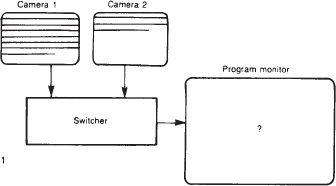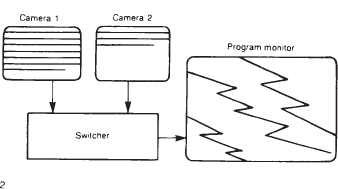The system needs to have a standard beat.
Analog Sync Generators
What exactly is a sync generator? A descriptive name would be color synchronizing pulse-generating system. No wonder that it is simply called a sync generator. The sync generator is the master clock that coordinates the whole system. Like a drummer in a band, it sets the rhythm that keeps everything in time and running together as a unit rather than as a bunch of individual components, each doing its own thing. When you're working with a single camera, it's not that big a job, but when you start developing a more complex system, the job becomes more difficult.
Imagine that you have two separate cameras working independently of each other.You turn their power on, and off they go. The fact that their CCDs are scanning different parts of their targets at the same instant in time (out of sync or nonsynchronous) is no big deal. But what happens if we try to hook those cameras together through a switcher (a device that allows you to instantaneously change between different video sources)? In the diagram at the right, the electron guns of each CRT are in different locations scanning their targets. Assume that camera 1 is being shown on the program monitor (the monitor that shows what is being recorded or transmitted). What happens if you try to make an instantaneous change (cut) to camera 2? Since the cameras are out of sync, the picture on the program monitor will roll, jump, flicker, or tear — a so-called glitch. In other words, there will be a major picture disruption or breakup when the cut is made.
Imagine, on the other hand, what would happen if the electron guns on the two cameras had been scanning together. Depending on the switcher, there might still be a breakup, but it would be less severe. The sync generator is the remedy to this problem. Each of the cameras is sent a synchronizing signal, which keeps the cameras scanning together so that you can make clean transitions between cameras.
1. An unsynchronized system.
2. Making a transition with an unsynchronized system.
3. Making a transition with a synchronized system.



